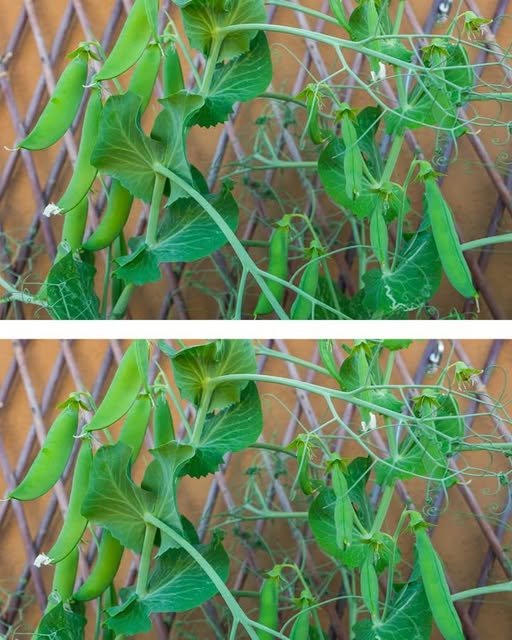Pea plants are a delightful addition to any garden, known for their sweet pods and vibrant green foliage. However, to maximize their growth potential and yield, a well-constructed trellis is essential. A trellis not only supports the plants but also enhances air circulation, reduces disease risk, and makes harvesting easier. Many gardeners underestimate the importance of a good trellis, often leading to tangled vines and reduced productivity. This article will guide you through the process of building an effective pea plant trellis, ensuring your garden thrives.
Common Pitfalls in Pea Plant Trellising
One of the most common mistakes gardeners make is using inadequate materials that cannot support the weight of mature pea plants. Flimsy structures often collapse, damaging the plants. Another pitfall is placing the trellis too late in the growing season, which can disturb the roots and hinder plant growth. Additionally, many gardeners fail to consider the height requirements of different pea varieties, leading to trellises that are either too short or too tall. Proper planning and understanding of your pea plant’s needs are crucial to avoid these issues.
Understanding the Importance of a Proper Trellis
A well-designed trellis is vital for several reasons. It keeps the plants off the ground, reducing the risk of rot and pest infestations. By allowing vertical growth, a trellis maximizes space efficiency, making it ideal for small gardens. Furthermore, it facilitates better sunlight exposure and air circulation, promoting healthier plants. A sturdy trellis also simplifies maintenance tasks such as watering, weeding, and harvesting, ultimately leading to a more productive and manageable garden.
Materials Needed for Building a Pea Plant Trellis
To build a durable pea plant trellis, you will need the following materials: sturdy wooden or metal stakes, galvanized wire or garden twine, a hammer or mallet, and a measuring tape. For added stability, consider using a crossbeam or horizontal supports. If you prefer a more aesthetic approach, bamboo poles or lattice panels can also be used. Ensure all materials are weather-resistant to withstand outdoor conditions throughout the growing season.
Step-by-Step Guide to Building a Pea Plant Trellis
1. Measure and mark the area where you plan to install the trellis.
2. Drive the stakes into the ground at regular intervals, ensuring they are deep enough to remain stable.
3. Attach horizontal supports or crossbeams to the stakes for added stability.
4. Secure the wire or twine horizontally across the stakes, starting from the bottom and working your way up.
5. Ensure the spacing between the wires or twine is appropriate for the pea variety you are growing.
6. Double-check the stability of the entire structure before planting your peas.
Choosing the Right Location for Your Trellis
Selecting the right location for your pea plant trellis is crucial for optimal growth. Choose a spot that receives full sun for most of the day, as peas thrive in bright conditions. Ensure the soil is well-drained and fertile, as poor soil can hinder plant development. Consider the direction of prevailing winds and position the trellis to provide some wind protection. Additionally, leave enough space between the trellis and other plants to prevent overcrowding and competition for resources.
Constructing the Trellis Frame
Begin by constructing a sturdy frame using your chosen stakes. Drive the stakes into the ground at equal distances, ensuring they are vertically aligned. For added support, attach horizontal beams or crossbars at the top and middle sections of the stakes. This framework will serve as the backbone of your trellis, providing the necessary support for the pea plants as they grow. Ensure all connections are secure to prevent the frame from collapsing under the weight of the plants.
Securing the Trellis for Stability
To ensure your trellis remains stable throughout the growing season, anchor the stakes firmly into the ground. Use a mallet or hammer to drive them deep enough to withstand wind and the weight of the plants. If necessary, use guy wires or additional stakes to reinforce the structure. Regularly check the trellis for any signs of loosening or tilting and make adjustments as needed. A stable trellis will provide reliable support for your pea plants, allowing them to thrive.
Training Pea Plants to Climb the Trellis
Once your trellis is in place, it’s time to train the pea plants to climb. As the plants grow, gently guide the tendrils towards the trellis, encouraging them to wrap around the wires or twine. You may need to tie the stems loosely with garden twine to help them get started. Regularly check the plants and adjust their positioning to ensure even coverage of the trellis. This training process will help the plants grow vertically, maximizing their exposure to sunlight and air.
Maintenance Tips for a Healthy Pea Plant Trellis
To maintain a healthy trellis system, regularly inspect the structure for any damage or wear. Tighten any loose wires or twine and replace damaged components as needed. Keep the area around the trellis free from weeds and debris to prevent competition for nutrients. Water the plants consistently, ensuring the soil remains moist but not waterlogged. Monitor the plants for signs of pests or diseases and take appropriate action if necessary. With proper maintenance, your trellis will support a bountiful pea harvest.
Conclusion: Enjoying the Benefits of a Well-Built Trellis
A well-constructed pea plant trellis offers numerous benefits, from increased yield to easier maintenance. By following the steps outlined in this guide, you can create a trellis that supports healthy plant growth and enhances your garden’s productivity. With the right materials, location, and care, your pea plants will thrive, providing you with delicious, homegrown peas throughout the season. Enjoy the satisfaction of a successful gardening endeavor and the rewards of your labor.



